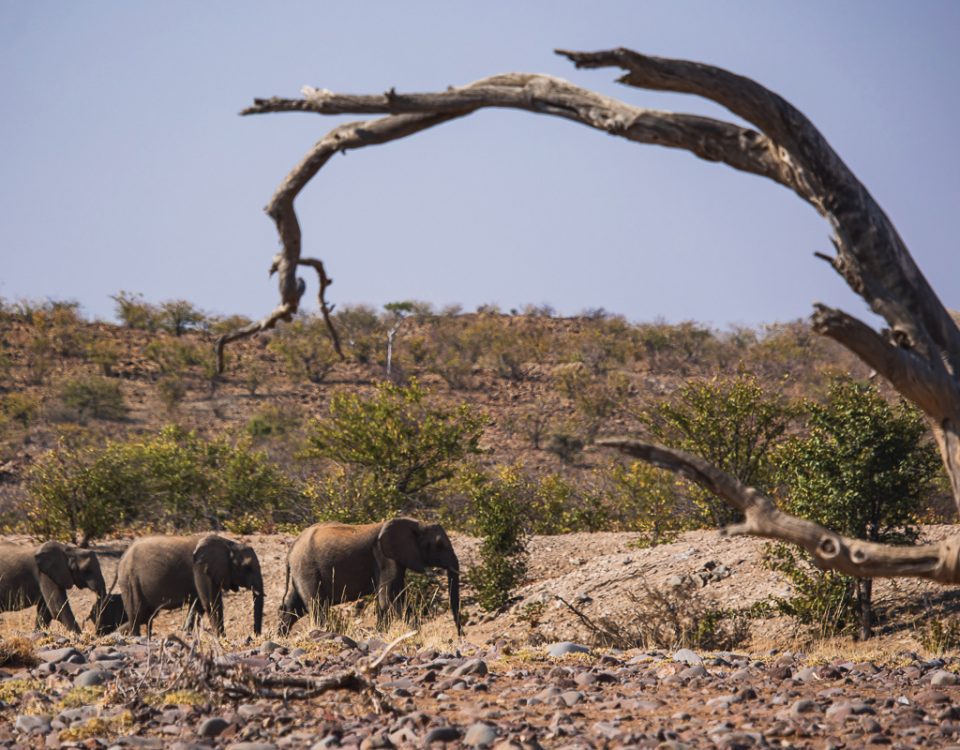Public Lecture | 13 May
May 11, 2015Presentations | 18 & 20 May
May 13, 2015Extracts from Namibia Holiday & Travel 2015
THE NAMA
The only true descendants of the Khoekhoe in Namibia are the Nama, whose ancestors originally lived north and south of the Orange River. Eight Nama tribes were already living north of the river when Jager (father of Jan Jonker) and Jonker Afrikaner crossed it with the Afrikaner tribe. The Afrikaners and four other tribes represent the so-called Oorlam group, which entered the country during the nineteenth century. Pushed continuously northwards by a rapidly advancing white farming community, the Nama, led by the famous Jan Jonker Afrikaner, settled further north in the southern and central parts of the country.
As pastoral nomads, the Nama traditionally had little need to build permanent structures. Their beehive-shaped rush-mat houses were ideally suited to their lifestyle. The concept of communal land ownership still prevails with all tribes, except for the =|Aonin or Topnaars, whose !nara fields are the property of individual lineages. Today most Nama live in permanent settlements. They have adopted western lifestyles and the Christian religion, and work within the formal economy.
The Nama have much in common with the San. They are comparatively light in colour and generally short in stature, with certain distinctive characteristics, such as the women’s small and slender hands and feet. They also share their linguistic roots with the San, speaking with distinctive clicks. The Khoekhoegowab Dictionary with an English–Khoekhoegowab Index, compiled by Professor Wilfrid Haacke and Eliphas Eiseb, was published in 2004.
Social structure and lifestyle
Traditionally the Nama are cattle farmers. Their socioeconomic unit is the patrilineal family group, which functions within the wider Nama group. The individual groups originally functioned separately under chiefs and councillors who sometimes united against a common enemy such as the Herero but often clashed with one another. With the entry of the Herero and their intrusion into the pasturelands of the Nama, a fierce and prolonged conflict arose between these two groups. The struggle was brought to an end by German colonial forces in the late 1800s, and home areas such as Berseba, Bondels, Gibeon (Krantzplatz), Sesfontein, Soromas and Warmbad were placed at the Namas’ disposal.
Nama people have a natural talent for music, poetry and prose. An example of a traditional dance is the well-known Nama stap. Numerous proverbs, riddles, tales and poems have been handed down orally from generation to generation. Nama praise poems range from impromptu love songs and formalised praise of heroic figures, to songs of the animals and plants in their environment.
Dancing, sewing and embroidery
In the Naukluft environs an insight can be gained into the lifestyle of the Nama people by visiting the small community at Nabasib, halfway between Mariental and Maltahöhe. To help alleviate poverty, the guest farms and the community have formed the Naukluft Foundation.
The Foundation supports the Nabasib School Choir and dance group by providing material for the Nabasib women to make the waistcoats and traditional dresses they wear when they perform. The Nabasib kindergarten, pre-primary and school is also supported by the Foundation.
To preserve the art and tradition of sewing and embroidery in the south, local entrepreneurs have initiated several projects, including Gibeon Folk Art.
Community-based tourism
Stopovers en route to the main tourist attractions in the south provide an opportunity to meet the interesting people of the south.
Ten kilometres from Berseba is Bruckaros Campsite in beautiful mountain surroundings. With minimum facilities, and no running water, the attraction here is the scenic landscape.
In Keetmanshoop, Adonai Tours offers an introduction to Nama culture and an opportunity to experience some of the highlights of the south. The tours visit the Keetmanshoop township, Tseiblaagte, to view Nama singing and dancing, taste typical local food, learn about traditional dress and participate in a Nama wedding.
The Warmbad area is inhabited by the Bondelswarts or !Gami-nun, one of the 13 Nama groups living in Namibia. The small museum in Warmbad, housed in the renovated German jail, displays information on the guerrilla wars fought between the Bondelswarts and the Germans based there in the early 1900s.




